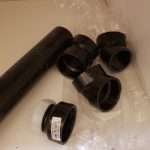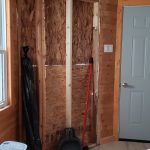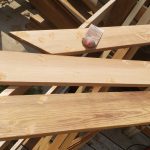Now comes the piecing together all the parts for the vanity. I hope this works!
There were tonnes of pieces of drywall leftover from 1403. My goal was to use up as much of this little pieces as possible. The downsize is that I end up skim-coating large swaths of wallboard. 🙁


























